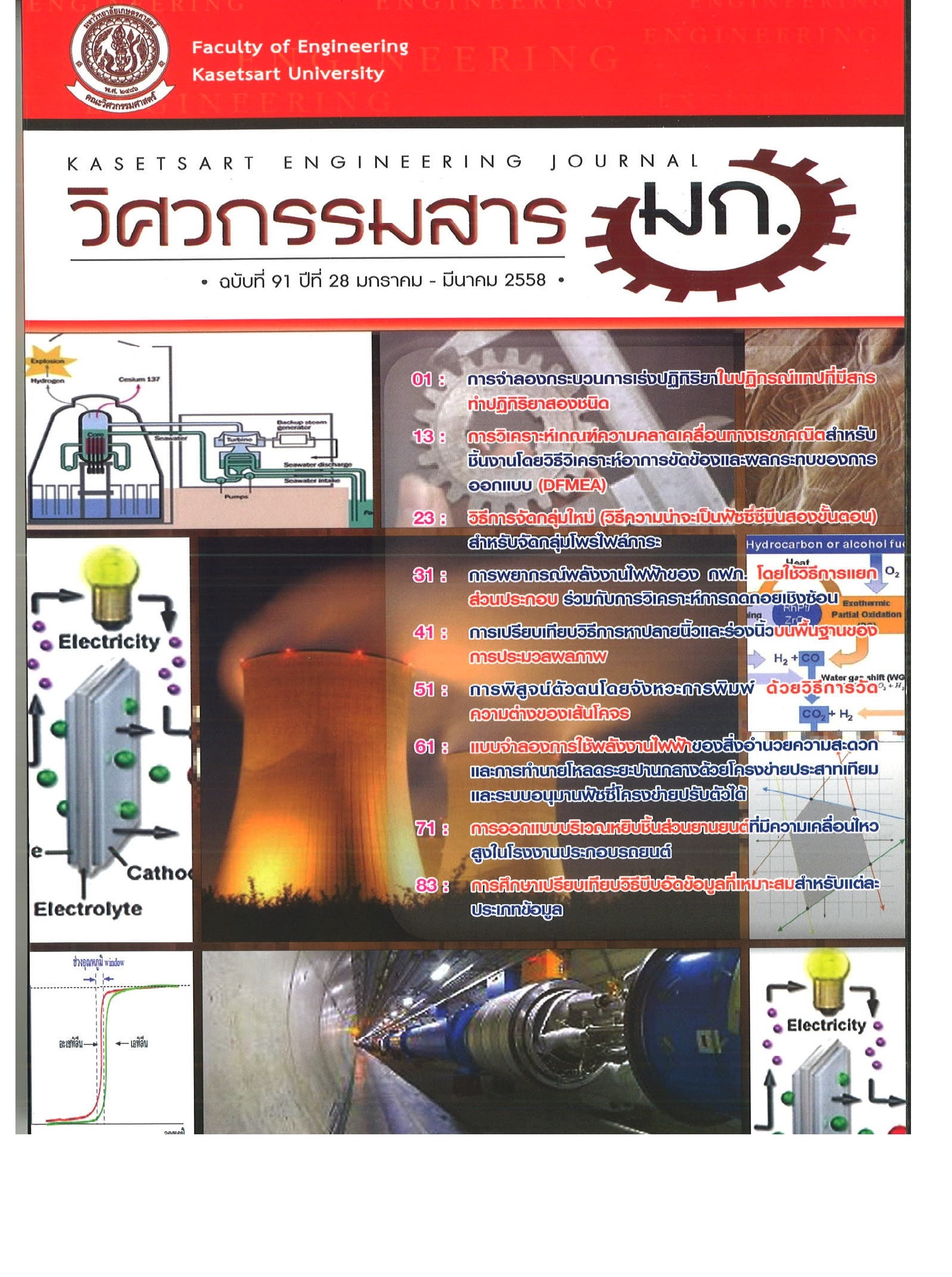การพยากรณ์พลังงานไฟฟ้าของ กฟภ. โดยใช้ วิธีการแยกส่วนประกอบร่วมกับการวิเคราะห์ การถดถอยเชิงซ้อน
Keywords:
การแยกส่วนประกอบ, การวิเคราะห์การถดถอยเชิงซ้อน, การวิเคราะห์อนุกรมเวลา, decomposition method, multiple regression analysis, time series analysisAbstract
บทความนี้นำเสนอการพยากรณ์พลังงานไฟฟ้ารายไตรมาสของการไฟฟ้าส่วนภูมิภาค (กฟภ.) ในการวิเคราะห์ข้อมูลใช้วิธีแยกส่วนประกอบของข้อมูลออกเป็นค่าแนวโน้มและความแปรผันตามวัฏจักร ความแปรผันตามฤดูกาล และความแปรผันแบบสุ่ม จากนั้นหาสมการที่เป็นตัวแทนของค่าแนวโน้มและความแปรผันตามวัฏจักรโดยใช้วิธีวิเคราะห์การถดถอยเชิงซ้อน โดยตัวแปรอิสระที่นำมาใช้คือค่าผลิตภัณฑ์มวลรวมประชาชาติ (GDP) และจำนวนผู้ใช้ไฟฟ้า จากนั้นนำมารวมกับค่าประมาณการความแปรผันตามฤดูกาลจะทำให้ได้ค่าพยากรณ์พลังงานไฟฟ้า จากการทดสอบค่าพยากรณ์ที่ได้จากวิธีการที่นำเสนอนี้พบว่าจะให้ค่าพยากรณ์ที่แม่นยำกว่าวิธีการวิเคราะห์อนุกรมเวลาแบบปกติ
Forecasting PEA Energy Using Decomposition Method with Multiple Regression Analysis
This paper presents a forecast technique of quarterly energy for Provincial Electricity Authority (PEA) using the decomposition method with multiple regression analysis. This solution starts with decomposing data into a trend-cyclical, a seasonal, and an irregular component. Next, multiple regression is applied to the trend-cyclical with independent variables; Gross Domestic Product (GDP) and number of customers, to find the mathematical model that best fits the data. Now, a calculation for energy forecast can then be performed by combining the trend-cyclical and the forecasted seasonal elements. After evaluating the forecast outputs, it shows a small deviations and errors; therefore, this should be the best confirmation of the robustness and precision of this method.


